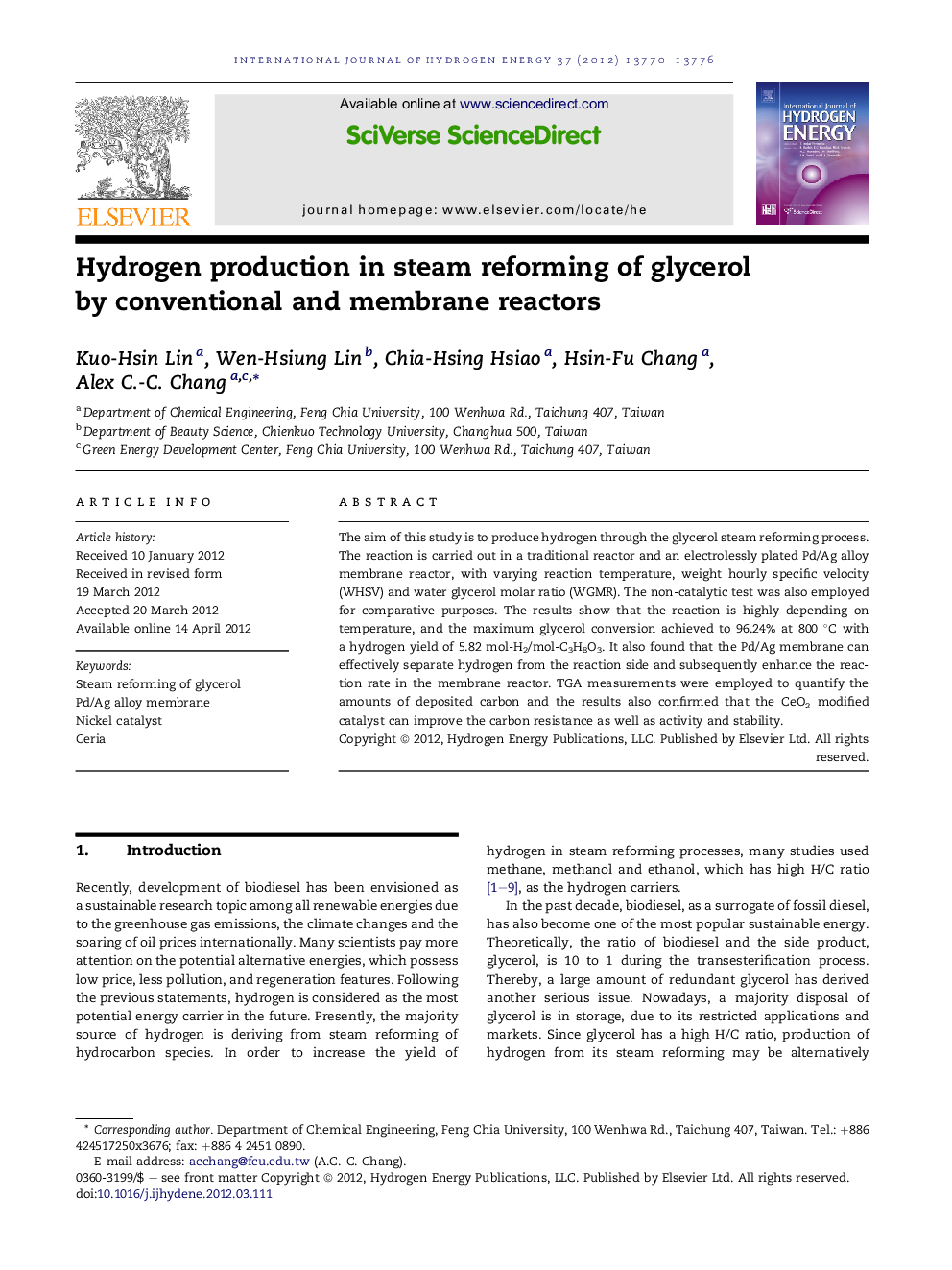| Article ID | Journal | Published Year | Pages | File Type |
|---|---|---|---|---|
| 1282282 | International Journal of Hydrogen Energy | 2012 | 7 Pages |
The aim of this study is to produce hydrogen through the glycerol steam reforming process. The reaction is carried out in a traditional reactor and an electrolessly plated Pd/Ag alloy membrane reactor, with varying reaction temperature, weight hourly specific velocity (WHSV) and water glycerol molar ratio (WGMR). The non-catalytic test was also employed for comparative purposes. The results show that the reaction is highly depending on temperature, and the maximum glycerol conversion achieved to 96.24% at 800 °C with a hydrogen yield of 5.82 mol-H2/mol-C3H8O3. It also found that the Pd/Ag membrane can effectively separate hydrogen from the reaction side and subsequently enhance the reaction rate in the membrane reactor. TGA measurements were employed to quantify the amounts of deposited carbon and the results also confirmed that the CeO2 modified catalyst can improve the carbon resistance as well as activity and stability.
► Doping CeO2 can improve the nickel dispersion on the alumina support. ► An energy saving strategy could be achieved in membrane reactor. ► The RWGS apparently influence the catalytic tests at high temperature.
